Currently Browsing: Startups
Posted by Managementguru in Entrepreneurship, How To, Marketing, Social Media, Startups
on Dec 26th, 2015 | 0 comments
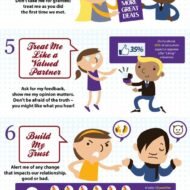
This list of top ten ecommerce tips will give you a fair idea on how to boost your online sales by tapping the emotional triggers of the consumers. Lead Generation and Conversion What are the Emotional Triggers that Make Customers Click and Buy? “People shop and learn in a whole new way compared to just a few years ago, so marketers need to adapt or risk extinction. Brian Halligan CEO, HubSpot. Consumer behavior is a hotbed of psychological research as it ties together issues of communication (advertising and marketing), identity (you are what you buy), social status, decision-making, and mental and physical health. What makes them Click and Buy Online? Have you ever given a thought about why customers leave your site without buying? You’ll be amazed to know the reasons behind all the lost customers for trivial but expensive mistakes from your end. Ok! Shoot…Let us cruise through one by one… There has never been a better time to start an online business. But starting and running a successful online store is hard work with many steps and decisions that need to come together at the right time. To help, we’ve put together a comprehensive resource list, hand-selected from our best content. This list will show you how you would research, build, launch and grow a profitable ecommerce business. 1. You Must Ask The Customer To Buy Now If you want customers to “buy now,” you should ask them to do so. Buy now is explosively powerful because shoppers are highly prone to making impulse purchases. Once you realize that this is common shopping behavior, you’re ready to ramp up your “buy now” strategy. Marketing researchers have discovered five major factors that cause a customer to “buy now”: 1. An overwhelming attraction to the product. 2. An intense need to buy the product at once. 3. Ignoring negative consequences that may arise from the purchase. 4. A feeling of excitement at buying the product. 5. Conflicting feelings of indulgence and self-control. 2. Use Models People Can Identify With If you’re selling clothing, jewelry, or accessories, one quick way to create a connection to your customer is to show your stuff on people they will identify with and like. Personal Branding Photoshoot Ideas This doesn’t mean you need to book Russian supermodels; it’s best if they look like your customers. This might mean funky and cool, like So Worth Loving. 3. Social Links People are more likely to purchase something if it’s recommended to them by someone they know and trust. Grow Your Business with Content Marketing So make sure that your product pages have links to Twitter, Facebook, Pinterest, and Google+ so that your customers can tell their friends about the great product they just found on your site. 4. Drive Sales with Persuasive Video Marketing They are the stores that have created consistently great video content around their products without spending fortunes on production. You too can match the quality of most of these videos using a good camera and a steady tripod, or with a single videographer. If you have a good video marketing strategy, it’s possible that you too can build a seven-figure business based on Youtube marketing. Successful stores have created the videos that people use to consult whether or not they buy their products. Need to figure out how to properly brew coffee? Watch the videos of Transcend Coffee. Need to know how to prune a fruit tree? Check out the videos of GrowOrganic Peaceful Valley. 5. Build A Massive Following On Instagram Used correctly, Instagram can be a highly-targeted, visual advertising channel for your brand. In fact, in a recent study it was discovered that Instagram provides...

Posted by Managementguru in How To, Marketing, Social Media, Startups, Strategy
on Dec 16th, 2015 | 0 comments
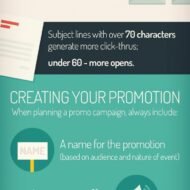
Email Marketing Techniques Email marketing has become one of the powerful sources of product promotion eventually generating more leads. Targeted emails can do wonders with regard to such lead generation and conversion. This article from Aweber precisely pin points the 200% user engagement that email marketing creates and the benefits that come along with it. The more the subscribers, the more the reach; its as simple as that. Bloggers, Product Promoters, Service Providers, Educational Institutions, Matrimonial sites and many more businesses along the vertical are beneficiaries of email promotions who are happily reaping the rewards. “How to go about it”, is the crucial question lingering in the minds of digital marketers and this session will definitely be helpful in finding the way out to increase sales conversions. Visit businessguru.aweber.com to grow your sales through email marketing. Let Your Subject Line be Catchy: Subject lines are crucial because they are the very first thing people see in their inbox. If it doesn’t intrigue them, it could also be the last thing they see of that email. Stat: “64% of people say they open an email because of the subject line.” More people open and engage with the newsletter when they know what would be covered. The insight provided by the title allow people to determine if it would be worth reading. When people knew ahead of time that they would be interested in what the email had to say, they engaged more with the content as well. Stat: “Personalized subject lines are 22.2% more likely to be opened.” The more direct subject lines were the clear winners. Though the creative subjects could be intriguing in the inbox, if people weren’t sure what they were going to gain from opening it, they were less likely to do so. Stat: “Subject lines fewer than 10 characters long had an open rate of 58%.” Some variables to consider: Length (does shorter or longer work better for your audience?) Personalization (including their name or other details in the title?) Use of Numbers (are they better spelled out or as numerals?) Question Marks and other icons (Eye catching or annoying?) Humor (Do people respond well to jokes or do they prefer a straightforward approach?) Scarcity tactics (Do people act on urgency?) As always, even if you think you know what your subscribers like best – it’s worth the test. For B2B companies, subject lines that contained “money,” “revenue,” and “profit” performed the best. What to avoid: In short, the spam filter. A few things to steer clear of: CAPS LOCK IN YOUR SUBJECT LINE Lots of punctuation!!!!!! Spammy words such as free, winner, or profits Any combination of these things Though these tactics might catch someone’s eye in their inbox, if they’re coupled with other spam concerns, they’ll be caught in the spam filter first. Stat: “7 in 10 people say they made use of a coupon or discount from a marketing email in the prior week.” What to do instead: Convince your reader, through the subject line, that your content is worth their time and won’t take up too much of it. According to Copyblogger, there are a few key things that accomplish this: “How to” headlines Headlines with numbers, indicating a list Simple, direct statements Headlines that sound like news, not an ad The use of “you” Stat: “72% of B2B buyers are most likely to share useful content via email.” Some Very Interesting Facts: Emails that include social sharing buttons have a 158% higher clickthrough rate. Women click 10% more often than men on mobile emails. Monday emails had the highest revenue per email. Email marketing spend grows 10% year over year. 40% of...

Posted by Managementguru in How To, Startups
on Oct 23rd, 2015 | 0 comments
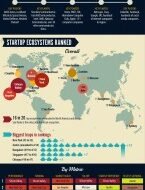
Source: ComputerScienceZone.org I was referred this great infographic on #Startup Evolution by Alex Thompson that categorically explains how the #startup ecosystem has evolved world over and also about the prevailing trends in the most lucrative industry. Happy to note that Bangalore has had a giant leap forward from the 19th to 15th place in the overall ranking. Don’t miss the interesting information presented down under on the rankings of #startups and #silicon valley case study. Enjoy the Infographic… The Startup Genome Project 2.0 The most comprehensive report on #startup structure, ecosystems, and disruptive industry trends has released a second version for 2015. Here are some of the most compelling facts about startups today. Business challenges The Industrial Era: The 20th century saw the first massive shift in corporate structure. Trying to deal with problems such as: Managing an enterprise over vast geographic distances Building and managing multiple customer segments Building brands to engage the newly emerging U.S. Middle Class The Information Era: 21st century businesses are dealing with an inversion of these issues,including: Instant connectivity between customers and business Plummeting cost of entry for new ventures Global competition Re-imagining new and traditional markets as part of a connected world The new business lessons learned by startups are expected to lead the massive restructuring of all traditional corporate structures by the middle of the 21st century. So What Is a Startup? Traditional small businesses have around 75% success rates over their first two years. Startups–even with VC backing–have a 75% chance of failing. What it takes to make them work: 1.)A-Players: Have the vision, execution, risk-taking profile, listening skills, leadership, and fear of failure to create things no one else has before, often with very little direction. 2.)Close proximity: Early stage startups can change course multiple times a day, with core team members working late into the night. Workspaces are often not even separated so everyone can stay on the same quickly changing page. 3.)Feedback loops: With limited money (time) and exposure in their hands, entrepreneurs need access to customer feedback. Mentors often help with strategizing, marketing, financing, taxes, legalities, and pacing. Entrepreneurs with mentors saw 3.5 times more growth and 7 times more investment than those without mentors. 4.)An ecosystem with built in experience: Certain geographic regions have had decades of drastically higher startup concentrations. Simple Turtle – A Place Where Learning is Simple Silicon Valley Case Study: 1950’s-1978: Defense era Key players: NASA Ames, Lockheed Missile & Space Division, United Defense, Hewlett Packard 1979-1986: Integrated Circuits era Key players: Shockley Semiconductor, Fairchild Semiconductor, Intel, AMD, National Semiconductor, over 50 other semiconductor firms. 1987-1996: Personal Computer Era Key players: Xerox, PARC, SRI, Homebrew Computer Club, Apple, 15+ computer companies 1997-2005: Internet Era Key Players: Netscape, Cisco, Google, SRI, hundreds of internet companies in region. 2006-2013: Social Media Era Key players: LinkedIn, Facebook, hundreds of social media companies. Startup Ecosystems Ranked: 1. Silicon Valley 2. New York 3. Los Angeles 4. Boston 5. Tel Aviv 6. London 7. Chicago 8. Seattle 9. Berlin 10. Singapore 11. Paris 12. Sao Paulo 13. Moscow 14. Austin 15. Bangalore 16. Sydney 17. Toronto 18. Vancouver 19. Amsterdam 20. Montreal Biggest leaps in rankings include New York (5-2), Austin (unranked to 14), Bangalore (19-15), Singapore (17-10), Chicago (10-7) By Metric: Performance Top 10 1. Silicon Valley 2. New York City 3. Boston 4. Los Angeles 5. London 6. Tel Aviv 7. Berlin 8. Chicago 9. Sao Paulo 10. Bangelore Though other ecosystems are expanding rapidly, Silicon Valley still currently has as much capital and exit volume as the other top 20 ecosystems combined. Funding top 10 1. Silicon Valley 2. New York City 3. Boston 4....

Posted by Managementguru in Entrepreneurship, How To, Project Management, Startups
on Sep 27th, 2015 | 0 comments
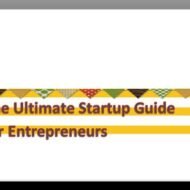
As entrepreneurs, business owners and marketers, we are obsessed with growth. You must be agile and capable of coming up with intelligent, reasonable solutions that will put you ahead of your competitors. Writing business plan for investors 6 questions you must answer. 1. How big is the business opportunity and is it growing? The first question is how big the business opportunity is and is it growing? To answer this, you need to provide information on the size of the market in which you’re competing and trends affecting the market. 2. What are the financial implications of investing in your company? How much money are you asking the investor for? What are you going to do with that money? What are the projected financial results? For example, what do you expect revenues will be in year one, in year three, in year five? What is expected net income in year one, year three and year five? 3. What is your exit strategy? Your exit strategy is critical when writing a business plan for investors, since the exit strategy dictates how the investor will ultimately receive payback for their investment and get their money out. 4. Who’s on your management team? This is key because most investors, or at least the smartest investors, are betting on the management team as much as they’re betting on the market opportunity. You see, even if you have the greatest business idea in the world, if the management team can’t execute on it, then the business will fail. 5. What risk factors have you altready overcome? Every business has risk factors, and the earlier on in your business, the more risk factors. For example, if you currently have an idea for a new product, the risk factors include, Whether or not you will be able to design the product Whether you could cost effectively manufacture the product Whether consumers/businesses want/will buy the product Whether you can cost effectively market the product Whether you could build a quality management team that can execute on the opportunity 6. What are the barriers to entry? Specifically, once you start growing your company, what is there to prevent others, individuals and companies from stealing your customers? Part 2 of this series is coming through…. Here’s another humble attempt to showcase India’s ‘Most preferred Startups to work for’, startups that promise a great deal of work, value and learning to the professionals and freshers out there. 1. Ola – Founded in Jan 2011 by IIT Bombay alumni Bhavish Aggarwal and Ankit Bhati, Ola is not only India’s most popular mobile app for personal transportation, but also one of the most talked about ‘startups’ from India. Ola has also emerged as the top preferred startup to work for in our survey. The Billion Dollar Unicorn has surely caught the imagination of the young employable population. 2. Zoomcar – At No. 2 is another startup that is solving the problem of urban transportation. This self-drive car rental company raised $11 million from Sequoia Capital, Empire Angels and NGP, a week back. 3. FreeCharge – FreeCharge occupies the third position on the leaderboard. Earlier this year, FreeCharge was acquired by Snapdeal in one of the biggest M&A in the Indian internet ecosystem. 4. Freshdesk – It is encouraging to see a B2B startup occupying the fourth position on this list. Freshdesk is steadily appearing to be one of the best product startups built out of India. Perhaps a testimony to this was its latest $50 Million Series E funding from Tiger Global, Google Capital and Accel. 5. Housing – Unscathed by the myriad controversies surrounding it,...

Posted by Managementguru in Business Management, Financial Management, How To, Startups
on Sep 25th, 2015 | 0 comments
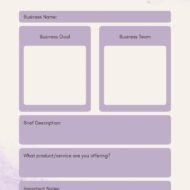
When you write your business plan, start with the basics, and write the things that you have already thought about. The name of your business, your goals, your team and the products/services you propose to offer. This gives a clean headstart to further evolve your business plan. A business plan should mainly focus on the future fund flow that will pique the interest of the bankers you are trying to pitch for a loan or investors whom you want to genuinely impress. Here are a few Business Plan Starter Questions 1. What is your mission statement? Your mission statement is what you want to do now, and your vision statement is what you want to do in the future. 2. What are your top keys to success? Don’t write a laundry list of keys, keep it simple, and focused. 3. What is your value proposition? Why should someone do business with you? 4. What are your core competencies or skills? 5. What is your start up budget? Write it like a grocery list, at first, and add up the numbers. 6. The executive summary is written last; after the entire business plan is, absolutely, finished. Think of the executive summary as your movie trailer, build to attract interest in your business. Writing a business plan is a huge undertaking, and if you have never done it before, it is down-right scary. Planning to start a small business? Think no more.. You’ve hit the right spot and we have compiled all that is necessary to win over the challenges of a new startup. This guide will serve as a jump start for your new venture and make it exciting. The web has loads of sample plans, but how do you, really, write your own business plan, your own way? How do you write the plan that accomplishes the goals that you want to accomplish in your business? This Business Planner will make your process simple and hassle free! How to Start a Small Business at Home – Read on to find out the Benefits and Advantages of a Home-Based Business Ask Yourself the Right Questions First things first, you have to start thinking about what you’re not thinking about. Ask yourself the right questions, about your business and put it into your plan notes. The best way to write a business plan is to write it in small segments or pieces. Forget trying to consume, writing the entire plan as a large, mammoth, assignment. It is, too, overwhelming, give yourself a break, and write small bursts, of information. It is easier, to write your top three to five business objectives, clearly and concisely when you are not looking down the barrel of a twenty-thirty page business plan....










